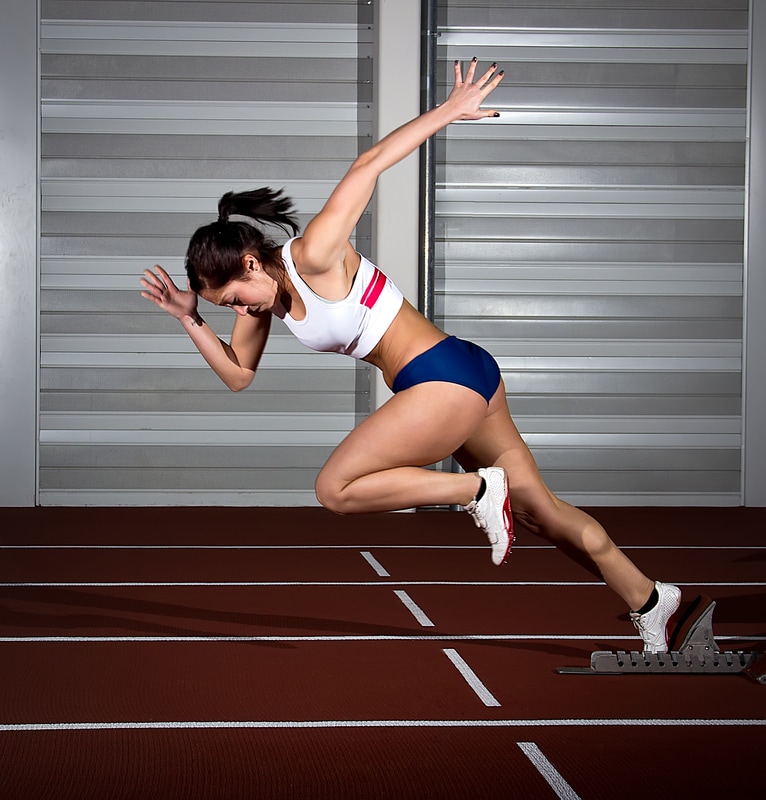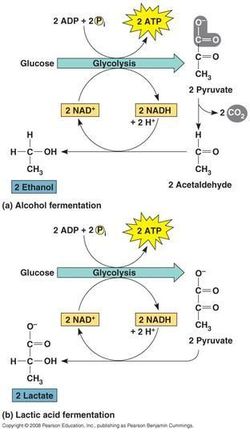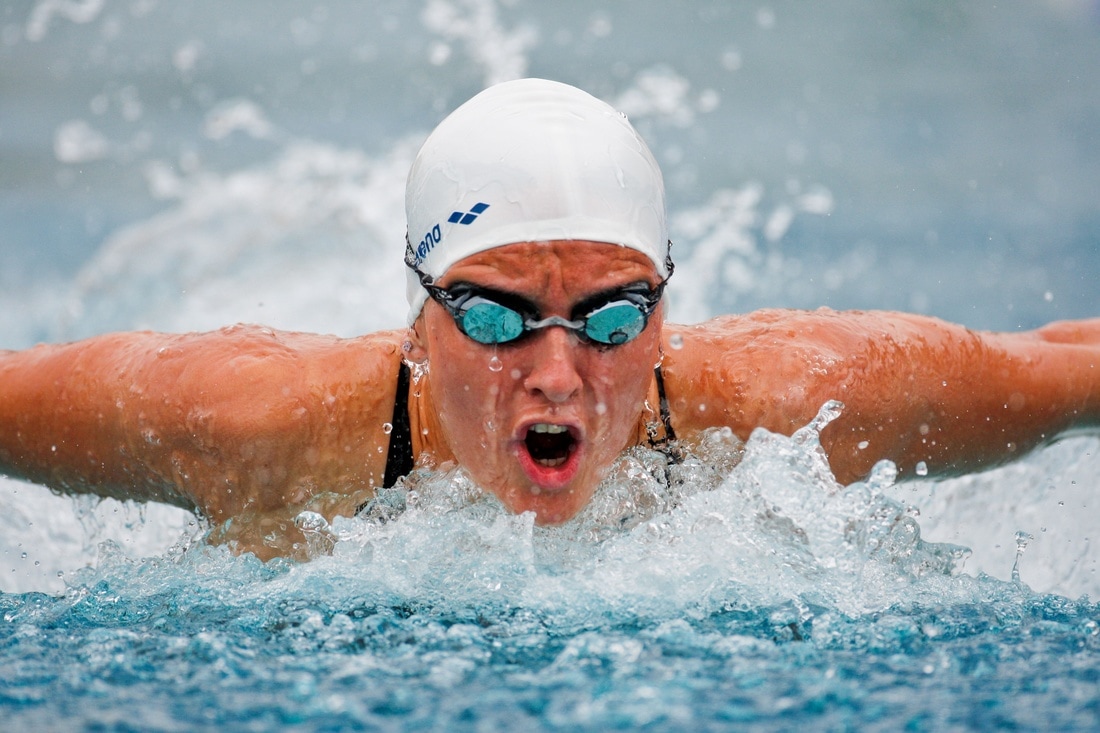Female Infertility : Myths , Facts and Hype. Be Aware, Be Careful, Be Smart. |
| A successful athlete is one who has the desire, the right attitude, favorable genes and a sensible approach to nutrition. Over ambitious and aggressive athletes would not mind trying artificial means of nutrition, like supplements and oral or injectable medications, along with their diet regimen to achieve their dreams or goals. Health professionals and the internet serve as primary reference sources for athletes. |
Energy Production
| Energy supply is the base for any functionality to happen. The body should keep replenishing the energy spent in exercise or physical activity or the exercise will cease. This continuous supply of fuel is obtained through an energy-rich component called adenosine triphosphaste (ATP) which is the fuel for all energy-requiring processes found within the cells of the body. ATP breakdown results in energy production which provides the adequate fuel for muscle contraction to take place. But the surprise package here is that only 3 oz of ATP is stored in the body at any one time which can provide energy only for few seconds of exercise. Hence ATP must be resynthesized continuously for a steady source of energy. ATP production can be done through any of the two important pathways: anaerobic or aerobic metabolism. |
Anaerobic or Lactic Acid Pathway
Aerobic Pathway
Energy Continum
Fuel for Contracting Muscles
Intensity
| Intensity of the exercise plays a predominant role in deciding upon the source of fuel used for muscle contraction. High-intensity, short-duration exercises depend on anaerobic production of ATP as glycogen broken down is used almost 18 to 19 times faster than when produced aerobically. Some sports use both aerobic and anaerobic pathways and have a high glucose consumption rate. Swimming, basketball, football and soccer are few examples for such sports. In sports such as jogging, hiking, aerobic dance, gymnastics, cycling and recreational swimming only half of the energy is from aerobic breakdown of muscle glycogen, while the other half is from fatty acids and blood glucose. Low- or moderate-intensity exercises such as walking depend entirely on aerobic pathway for energy. |
Duration
Effect Of Training
Nutritional Requirement Of Exercise
Proper intake of calories is the foundation to strike the right balance between energy expenditure and overall health maintenance. Calorific needs, nutrients and energy differ depending on the individual’s height, weight, age, sex and metabolic rate. Also the intensity, frequency, type and duration of workout impact the nutrient needs. The calorie needs of different groups of individuals are tabulated below:
Individual Type |
Workout Duration |
Calorie Requirements |
Individual participating in overall fitness program |
30 to 40min/day, thrice a week |
1800-2400 calories per day |
50-kg athlete involved in intense training |
2-3 hr/day (5-6 times weekly) or 3-6 hours in one or 2 workout sessions a day ( 5 to 6 days a week) |
2500-4000 calories per day |
Elite athletes |
Volume and intensity differ according to training phase and are definitely greater than intense training athletes |
7500-10000 calories a day |
Convenience Supplements
Weight Management
We often find athletes increasing or decreasing their weight to maximize performance. They alter their energy intake levels and push too hard to achieve a light-weight body. This can be commonly seen among female athletes participating in dancing or gymnastic event. Such drastic weight changes may ruin normal growth and result in eating disorders, delayed menarche and osteoporosis. Body fat should be the determining factor for goal weight of an individual. Weight gain or weight loss must be a gradual process with a weight loss between .5-1kg every week over several weeks and weight gain between 0.2-0.4 kg/week. Weight gain should constitute muscle gain over fat gain through strength training programs and fat intake of not more than 30% of kilocalories of the total calories consumed and protein intake of 1 to 1.5 g/kg of body weight.
Macronutrients
Individuals taking up regular fitness programs can comfortably meet their macronutrient needs by consuming a diet of 45% to 55% of calories from carbohydrates, 10% to 15% from protein and 25% to 35% from fat. Athletes involved in moderate-to-high volume training require greater amounts of carbohydrates and protein to meet their macronutrient needs. The recommendations vary greatly according to the individual’s body type, sports event in which they are participating and gender.
Carbohydrates
Carbohydrates requirements go parallel with an athlete’s daily total energy expenditure, type of sport, gender and environmental conditions.
Carbohydrate Intake Before, During and After Exercise
Preexercise Meal
Carbohydrate consumption before exercise helps to prevent hunger during exercise and maintain optimal blood glucose levels for the exercising muscle. The preevent meal should be:
- High in carbohydrates, low in fats (<25%) and easy to digest.
- Consumed atleast 3 to 4 hours prior to the event (4g/kg of body weight). If consumed 1 hour before the competition the consumption is reduced to 1g/kg of body weight.
- Rich in complex carbs such as a whole-wheat bagel with jam or honey, oatmeal, brown rice or low-sugar smoothie prepared with a protein powder.
Carbohydrates are consumed in between endurance exercise if the workout lasts for more than an hour to maintain blood glucose and boost output levels. The state of food consumed differs according to the athlete’s desire. Some athletes may prefer a sports drink while others may go for an energy bar or gel along with plain water. Around 26g to 30g of carbohydrates in the form of sports drink can be consumed every 30 min.
Carbohydrate Intake After Exercise
The muscle glycogen used during exercise must be replenished after workout. Maximum replenishment rate can be achieved when large quantities of carbohydrates (1-1.85 g/kg/hr) are consumed every 15-60 minutes for 5 hours after exercise. Supplementing this with 5 to 9g of protein for every 100g of carbohydrate consumed can elevate glycogen resynthesis rate. Majority of the athletes prefer to consume carbs in the form of liquids rather than eating them or to consume ready-to-eat foods such as bananas, oranges, melon or fruit pops.
Protein : RDA protein recommendations include
Individual Type |
RDA Recommendation (g/kg body weight daily) |
Adolescents aged 14-18 years |
.66 |
Adults |
0.80-1.0 |
Intense training athletes |
1.5-2.0 |
Athletes and nonathletes alike |
1.2-2.0 |
While inadequate protein intake can end in training intolerance, muscle wasting and retarded recovery consuming higher than recommended levels of protein should also be avoided. This can lead to improper training and competing at peak levels and also result in dieresis or dehydration.
FAT
Vitamins and Minerals
Many researchers have concluded that unless an athlete is deficient in a nutrient, like vitamins and minerals, supplementations do not boost performance. But many nutrients such as folate, zinc, vitamin B and calcium are of concern in athletes. This is due to their training schedules, infrequent nutrient-dense meals and low calorie intakes due to weight restrictions in certain events and games (gymnastics or dancing).
B Vitamins
B vitamins assist in energy cycles for increased energy metabolism. Wrestlers, gymnasts and rowers, who consume low-calorie diets continuously, lack B vitamins and supplementations aid to meet RDA levels. Vegetarian athletes could lack vitamin B12 as animal foods are their only sources and supplements are mandatory for such athletes. Athletes whose fruits and vegetables consumption is low lack in folate and hence supplementations along with wheat, grain and fortified products rich in folate are suggested.
Antioxidants
A diet high in antioxidants or supplements for the same can be proposed to antioxidant-deficient individuals. Fruits and vegetables are good sources of antioxidants.
Vitamins C and E
Vitamin C helps to improve the health and physical performance of athletes. Vitamin E helps to improve performance, provides protection against exercise-induced oxidative injury and enhances immune response. Vitamin E supplementation of 200 to 450 IU daily gives protection against oxidative injury.
Iron
Lack of iron even without anemia can lead to decrease in exercise performance. Low iron content is common among male adolescents, female athlete with heavy menstrual losses, athletes consuming energy-restricted diets and those training heavily in hot climate with heavy sweating. Iron supplementation and oral iron therapy are helpful in athletes lacking iron but not anemic.
Calcium
Female athletes, who have interrupted menstrual function, are at a high risk of osteoporosis. Female athlete triad is becoming popular among women athletes. Symptoms include estrogen deficiency, amenorrhea, disordered eating, low body fat and loss of bone mass. Treatment for this includes estrogen replacement therapy, weight gain and reduced training. It is generally prescribed for an increased intake of calcium and magnesium in female athletes irrespective of the menstrual history. Good sources of calcium include low-fat and nonfat dairy products, calcium-fortified fruit juices, soy milk and tofu. Amenorrheic athletes are recommended an intake of 1500 mg of calcium which can be met only with a daily supplementation of calcium and vitamin D along with diet.
Fluids
Drinking fluids is indispensable to regulate body temperature. Exercise produces heat and this must be reduced to avoid heat stress. Body shape, environmental conditions and physical activity determine the fluid intake needs of a person. DRI recommendations suggest water intake of 3.7 L/day in males and 2.7 L/day in females. Almost 20% of water comes from the food we consume and the remaining 80% must be consumed in the form of plain water, juice, coffee, tea, milk, sports drink and soup. Fluid intake increases greatly for individuals training in hot environments and can go up to 10 L/day.
It is recommended to replenish for the lost fluids immediately as athletes can tolerate a maximum loss of 2% of body weight. But even such a loss cannot be tolerated in hot temperatures and can disrupt performance. Rather than drinking plain water it is recommended to include sodium in fluid replacement solutions as plain water without any sodium intake can result in hyponatremia. This condition is relevant in individuals whose sodium levels fall below 130mEq/L and is indicated by symptoms such as lethargy, seizures or loss of consciousness. This can be treated by drinking sodium-containing fluids to provide the required 680mg of sodium per hour.
Potassium is an important electrolyte, similar to sodium, which helps to maintain body fluids. A potassium loss of 32 to 48 mEq/day is very meager and can be easily substituted by diet.
The rate at which any fluid is absorbed depends on many factors like the amount, type and temperature of the fluid consumed and the rate of gastric emptying.
Ergogenic Aids
Ergogenic aids include anything that is used to improve exercise performance capacity and training adaptations such as training techniques, alternative nutrition practices or a mechanical device. Dietary supplements are the most commonly used ergogenic aid. Research proves that 50% to 98.6% university athletes use some kind of supplements as ergogenic aids. Though many athletes believe that using these aids can boost their performance the reality is quite different. Many of these supplements do no help to improve performance but rather prove to affect the health and performance of the athletes in a negative way when consumed continuously.
AVOID FRAUD. EAT SMART.
Author
Dietitian & Nutritionist Dr. Nafeesa Imteyaz.
Ex HOD Fortis Hospital (Dept Of Dietetics & Nutrition)
Managing Director - First Eat Right.
Fellow - Academy of Nutrition & Dietetics USA. http://www.eatright.org
Archives
July 2024
June 2024
May 2024
November 2022
October 2022
September 2022
August 2022
July 2022
September 2021
November 2020
July 2020
May 2020
April 2020
February 2020
January 2020
December 2019
November 2019
October 2019
September 2019
August 2019
July 2019
June 2019
May 2019
April 2019
March 2019
February 2019
January 2019
December 2018
November 2018
October 2018
September 2018
August 2018
July 2018
June 2018
May 2018
April 2018
March 2018
February 2018
January 2018
December 2017
November 2017
October 2017
September 2017
August 2017
July 2017
June 2017
April 2017
February 2017
January 2017
Categories
All
Dietary Supplement Abuse
Female Infertility
Superfood - Banned Term
Vibration / Heat Machines For Weight Loss - A Big Fraud





